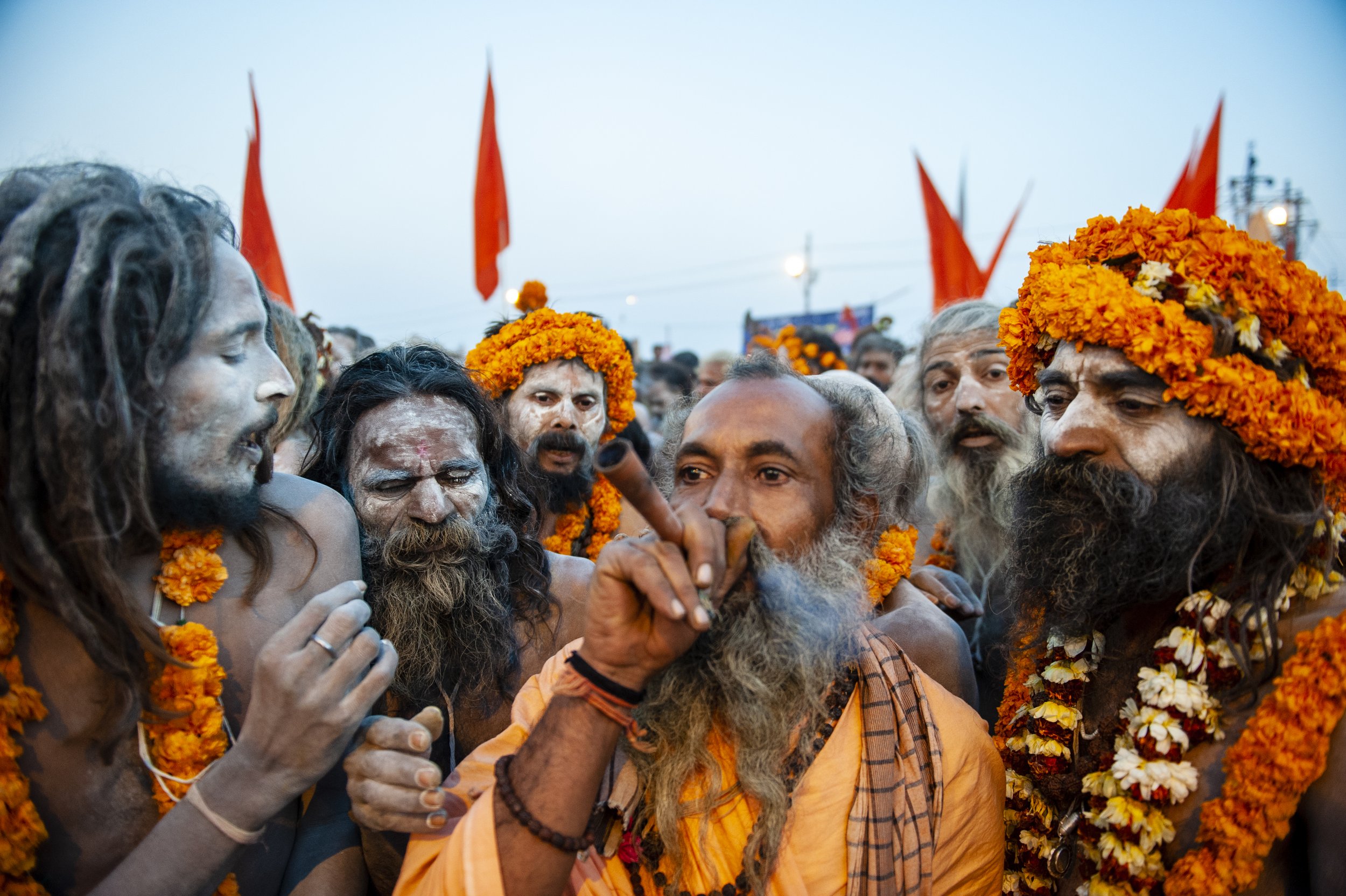
KUMBH MELA
25 - 28 FEB, 2025
Itinerary Highlights
25 Feb: Fly to Prayagraj and tranefer to Aagman Camps
26 Feb: Stay in Prayagraj at Aagman Camps. Shivratri Bathing Day
27 Feb: Stay in Prayagraj at Aagman Camps
28 Feb: Fly to Delhi
KUMBH MELA
25 FEB - 28 Feb, 2025
with Unique Photo Adventure’s Photographer
04 Days/03 Nights
INR 99,000 Per Person (Twin Sharing)
DEPOSIT: 100%
DOMESTIC AIR: On your own
Group Size 6-10
Every twelve years, tens of millions of men, women, and children converge on the floodplains of the Ganges and Yamuna Rivers in Allahabad, India, for the Kumbh Mela. This extraordinary religious gathering draws pilgrims from across India and around the world, all seeking to bathe in the sacred confluence of the two rivers. With a history spanning over 2,500 years, this deeply spiritual tradition continues to flourish, embodying India's enduring cultural and religious heritage.
The Maha Kumbh Mela
Prayag, is a historic city that lies at the sacred confluence of the Ganga and Yamuna rivers. This site, once home to the Aryans, holds immense spiritual significance and is the location of the renowned Kumbh Mela, one of the largest religious gatherings in the world. Held every twelve years, this event draws millions of Hindu devotees to its sacred grounds.
The Maha Kumbh Mela, celebrated in Prayag (Allahabad), occurs when Jupiter is in Taurus (Vrishabha) and the Sun and Moon align in Capricorn (Makara). This celestial alignment marks a profoundly auspicious time, and the Sangam—the confluence of the Ganges, Yamuna, and the mythical Saraswati rivers—becomes the focal point for the grand celebrations, attracting countless sadhus and devotees.
Renowned as the most sacred and largest of all melas, the Prayag Kumbh Mela is a deeply spiritual occasion, embodying centuries of tradition and faith.Shiv Rathri
On February 26, we will witness the grand finale of the Kumbh Mela with the last auspicious bathing day, coinciding with the celebration of Shivratri. This sacred festival, dedicated to Lord Shiva—the destroyer and transformer in the Hindu trinity—adds profound spiritual significance to the event. Shivratri marks a night of deep devotion and is considered one of the most important days in the Hindu calendar. At the Kumbh Mela, this occasion draws an even greater influx of devotees to the banks of the sacred rivers, where they perform special rituals and offer prayers in honor of Lord Shiva, enhancing the spiritual essence of this monumental gathering.
The Sangam
This sacred site marks the confluence of two of India's holiest rivers, the Ganges and the Yamuna, along with the mythical Saraswati, deeply revered in Hinduism. Pilgrims visit this hallowed ground throughout the year, often arriving by boat to partake in its spiritual significance. However, the area truly comes alive during the annual Magh Mela, a six-week festival held from January to March. During this time, thousands of devotees gather for six communal "holy dips," immersing themselves in the waters as an act of faith and devotion.
Itinerary
Day 1: 25 Feb — Fly to Prayagrag
After our flight to Prayagraj, we will be greeted by our driver who will transfer us to our camps in Prayagraj, the site of the Kumbh Mela, a sacred Hindu pilgrimage that rotates among four locations in India. This monumental event attracts millions of devotees who come to bathe in the holy rivers to purify their souls.
For photographers, this is a unique opportunity to capture the vibrant tapestry of India's culture. From the colorful processions of sadhus (holy men) dressed in vibrant robes to the fervent prayers and rituals along the sacred banks, the Kumbh Mela offers a rich array of visual delights. The atmosphere is charged with spirituality and devotion, creating a setting that inspires photographers to capture profound moments of faith and unity across cultures.
Overnight at Aagman Private Tented Camp (B, L, D)
Day 2: 26 Feb — Maha Shivratri Bathing Day
Shivratri is celebrated across India, Nepal, Bangladesh, and other regions with significant Hindu populations. This festival adds a deeper layer of spirituality and devotion to the Kumbh Mela. Honoring Lord Shiva, the destroyer and transformer in the Hindu trinity, Shivratri represents a night of profound significance in the Hindu calendar. During this time, an influx of devotees gathers along the banks of the holy rivers to participate in special rituals and prayers dedicated to Lord Shiva.
For both pilgrims and photographers, Shivratri presents a unique opportunity to witness the confluence of faith and tradition. The atmosphere buzzes with devotion as devotees engage in fasting, meditation, and the chanting of sacred hymns throughout the night. Temples and makeshift shrines along the riverbanks come alive with colorful decorations and offerings, creating a captivating spectacle for photographers.
Moreover, Shivratri at the Kumbh Mela is not only a religious event but also a cultural celebration, featuring traditional music, dance, and folk performances, enriching the experience for visitors. This blend of spirituality, tradition, and cultural heritage transforms the Kumbh Mela into a journey of self-discovery and spiritual renewal for all participants.
Overnight at Aagman Private Tented Camp (B, L, D)
Day 3: 27 Feb — Kumbh Mela at Allahabad
On our final day in Allahabad, we will photograph the thousands of pilgrims beginning their journeys back to their villages. We will spend some time at the Prayagraj train station, an excellent location to capture this mass movement of humanity.
Day 4: 28 Feb — Fly to Delhi. End of Tour
Tour Fee Includes:
Accommodation for 03 nights on a twin-sharing basis in the specified hotels.
All meals provided.
Transfers for arrivals and departures, sightseeing tours, and ground transportation will be provided in an air-conditioned Innova or mini van.
Services of a local English-speaking guide during city tours.
All applicable taxes.
Tour Fee Excludes:
Airfare
Any international or domestic flights that are quoted separately are not included in the tour fee.Insurance
Travel and medical insurance coverage is not part of the tour package. Travelers are encouraged to secure their own insurance for adequate protection during the trip.Personal Expenses
Expenses of a personal nature are not covered, including:Gratuities for service staff
Laundry services
Charges for telephone and fax calls
Alcoholic beverages
Fees for photography or videography at monuments
Medical expenses
Any other personal items or services
Tips and Porterage
Gratuities and porterage fees at airports and hotels are excluded. Travelers should plan to tip service staff based on their level of satisfaction.Unforeseen Expenses
Any additional expenses or changes incurred due to unforeseen circumstances while in India are not included in the tour fee. This may cover unexpected costs related to itinerary changes or other emergent needs.Travelers should consider these exclusions when budgeting for their trip
Paying by Wire Transfer:
For wire transfer payments, please contact hello@uniquephotoadventures.com to obtain the necessary bank account details.
Equipment Checklist:
Bring your own laptop and storage media.
Camera body or bodies.
Lenses: a 24-70mm zoom and a 70-200mm zoom are excellent.
Cleaning kit for your camera and lenses.
Rain and dust covers for your camera and lenses.
Battery charger.
Spare batteries.
Extra memory cards.
Memory card reader.
USB drive for transferring images.
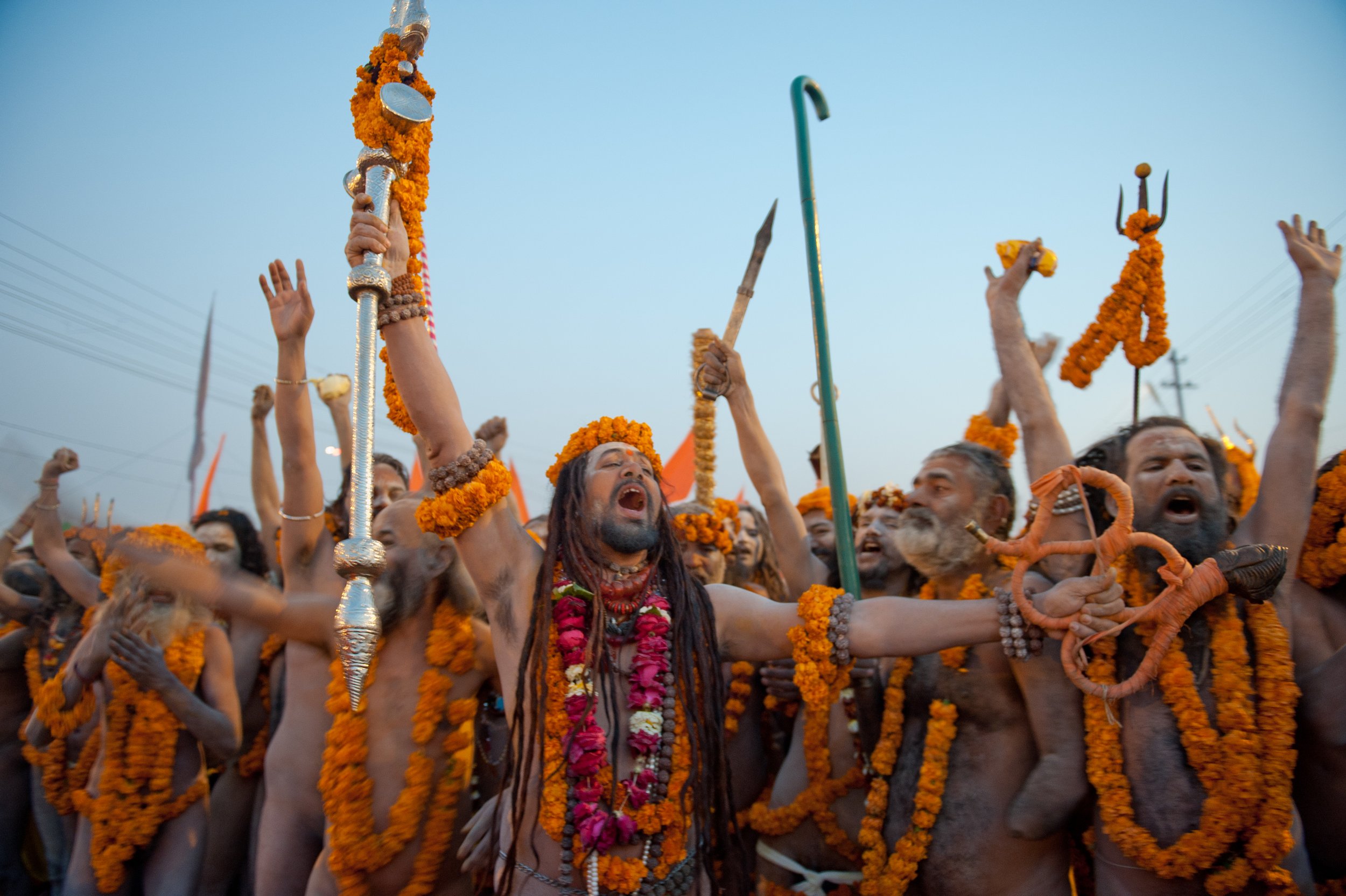
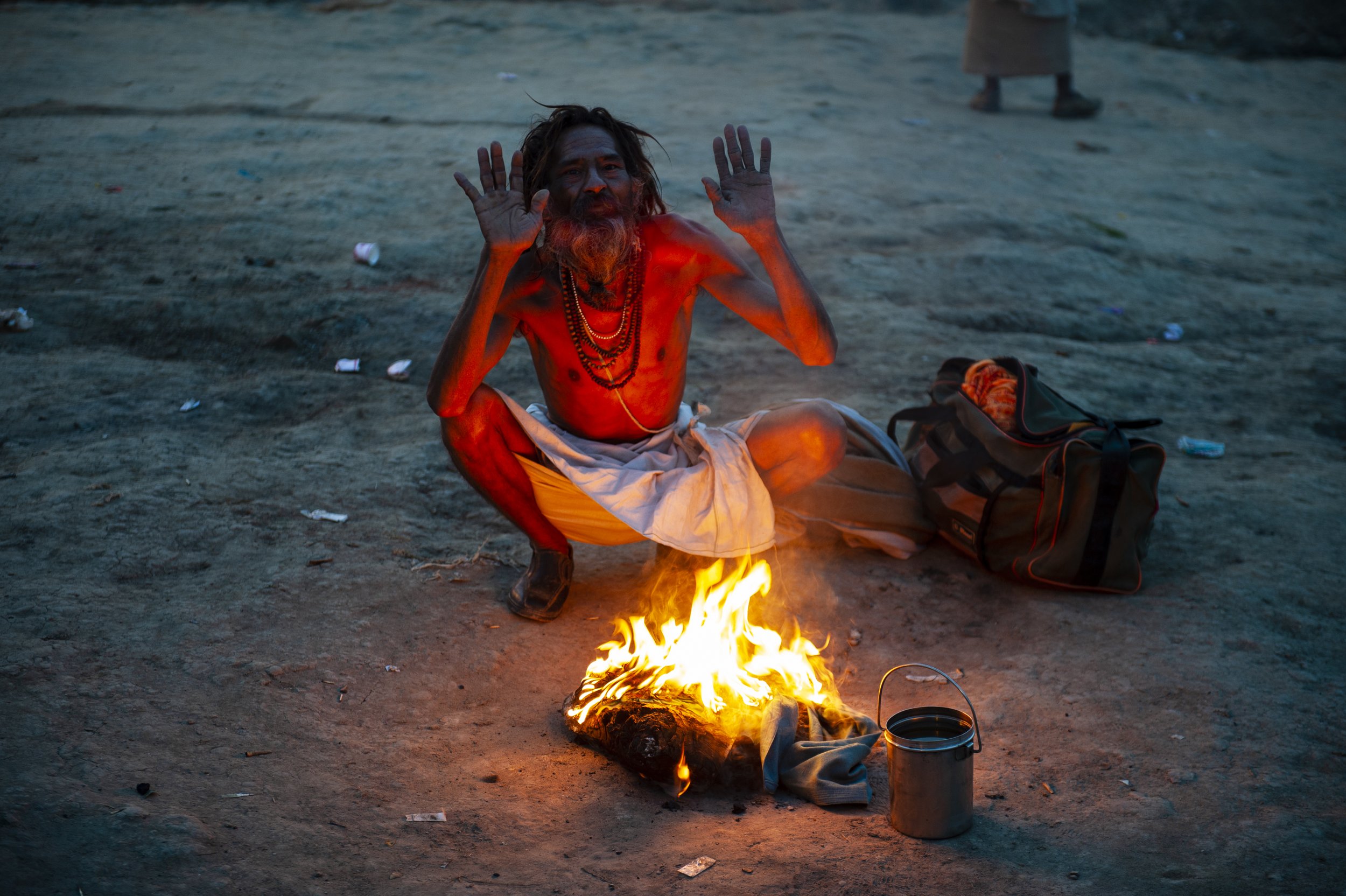
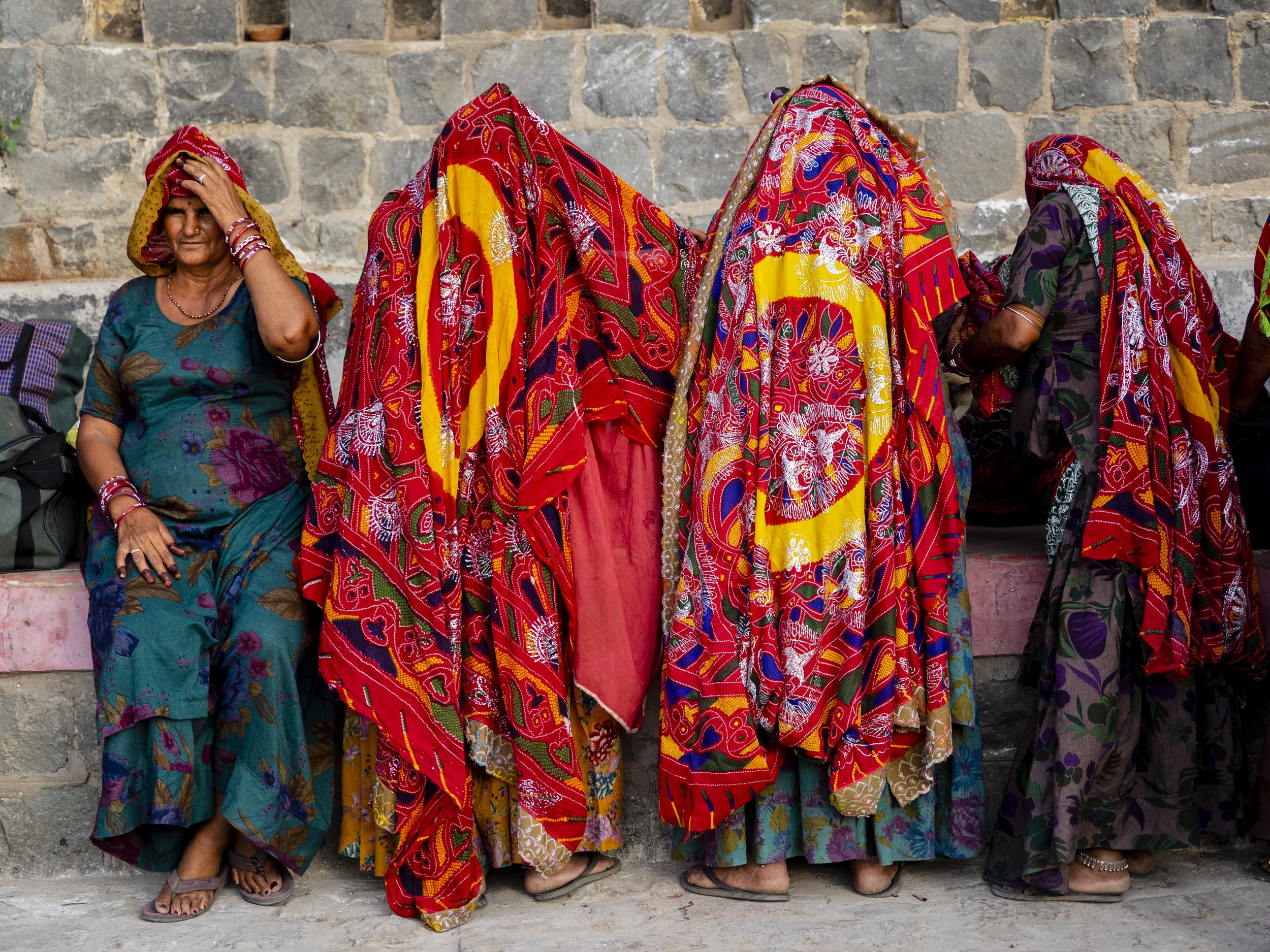
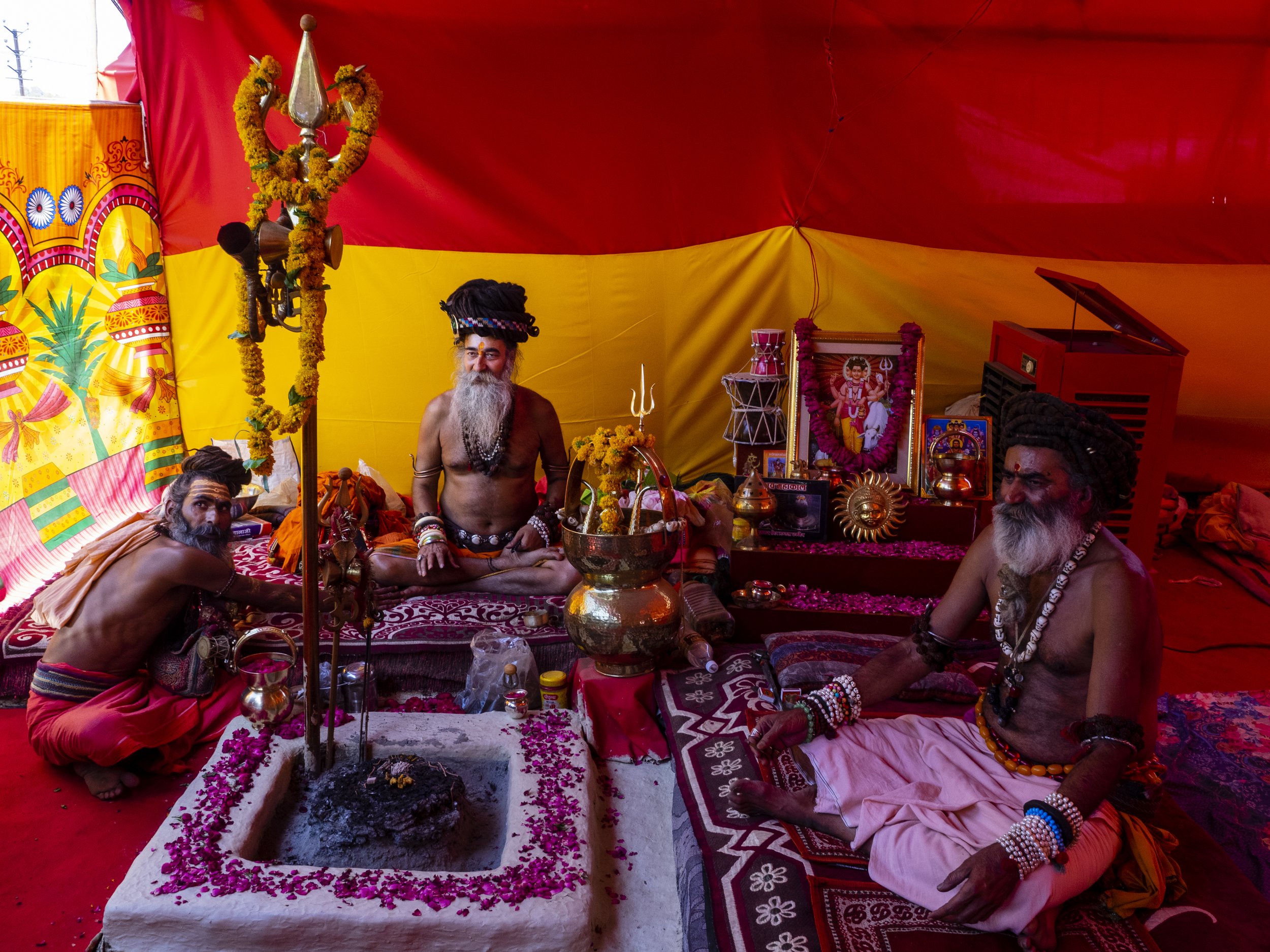
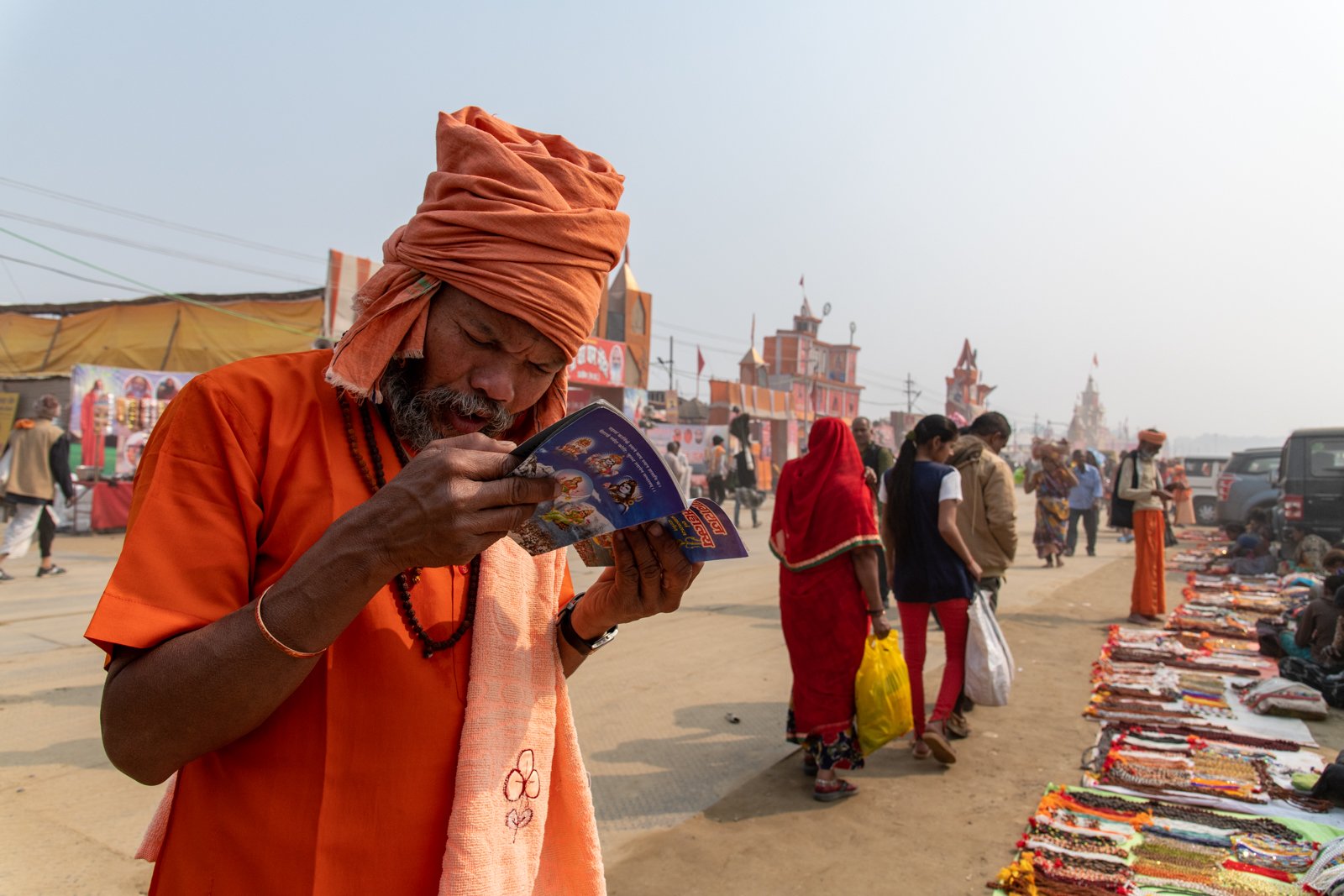

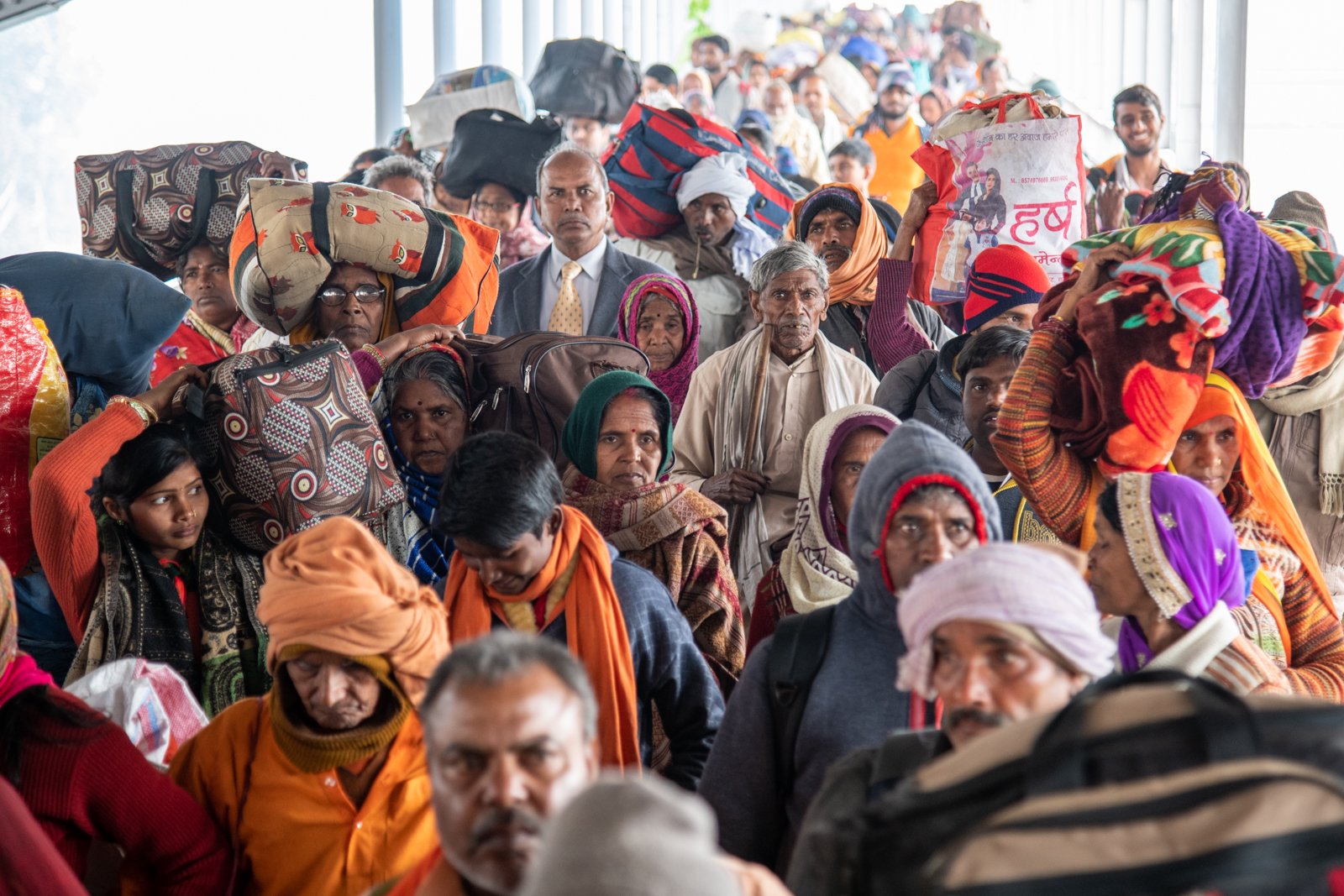
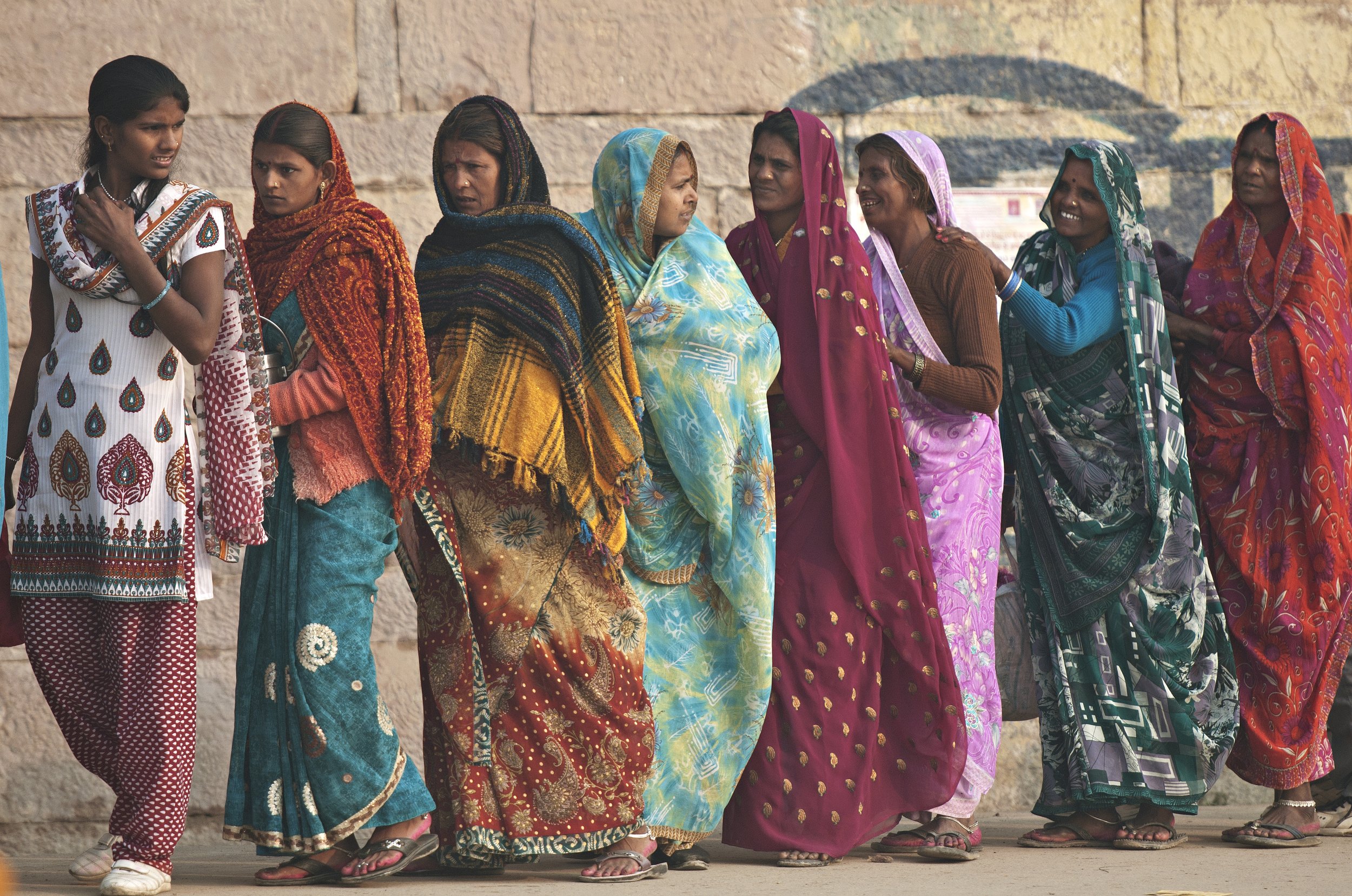
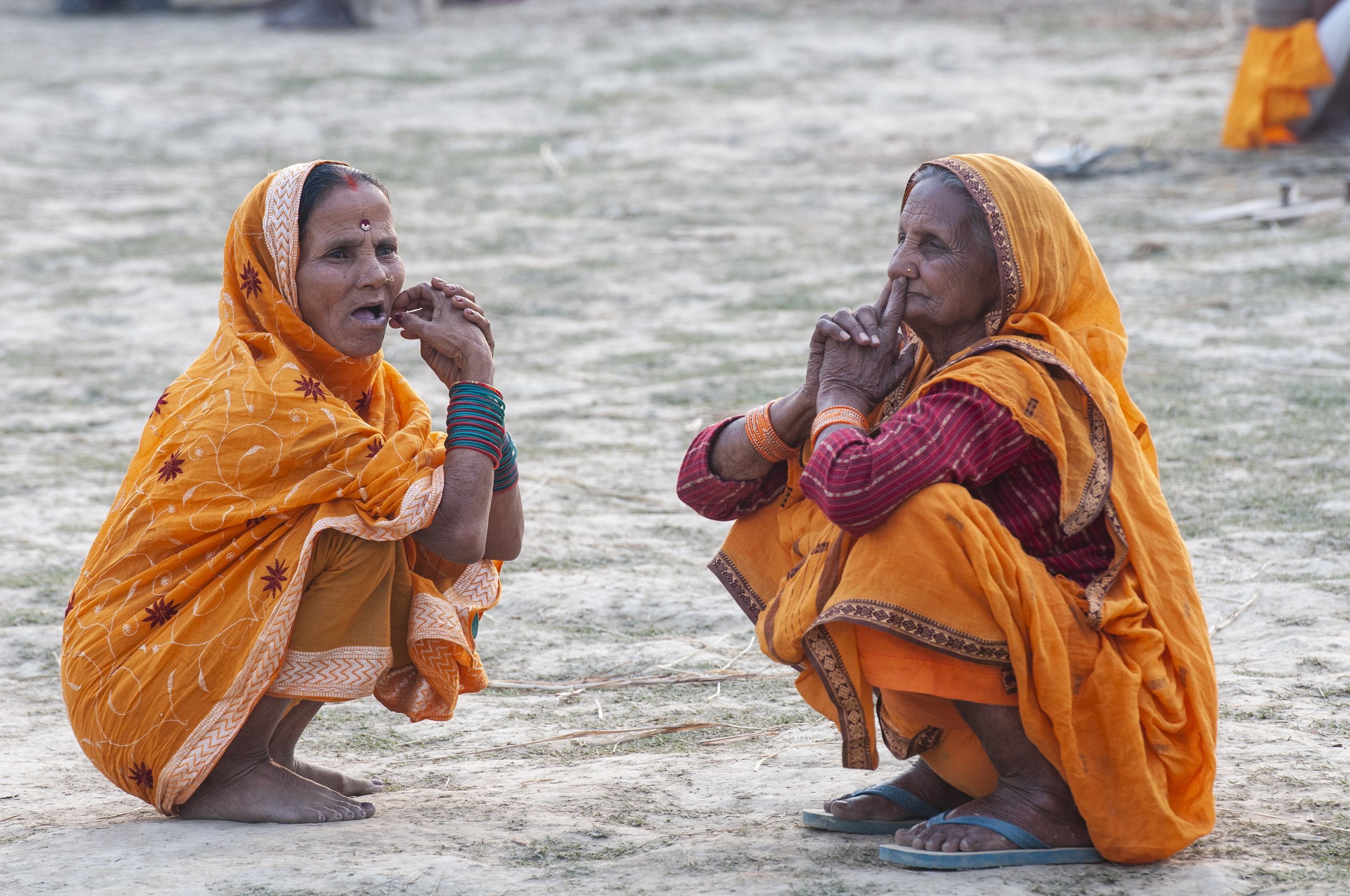
Trip Notes
Arrival
You will arrive on February 21, 2025, at Indira Gandhi International Airport. Upon your arrival, you will be greeted by your guide, who will assist you with your luggage and escort you to the Lemon Tree Hotel for check-in.
Departure
Your return flight is scheduled for March 3, 2025. You will depart from Indira Gandhi International Airport.
Visa Requirements
Most travelers are required to obtain a tourist visa to enter India. Visitors from numerous countries have the option to apply for a 5-year, multiple-entry e-visa, which can be conveniently done online. For more information and to submit your application, please visit this link. Ensure that you complete your visa application in advance of your trip to avoid any last-minute issues.
Weather
In February, temperatures in Prayagraj and Varanasi range from around 15°C (59°F) to 27°C (81°F) during the day, with cooler evenings and nights. It’s a good idea to pack for varying conditions to stay comfortable.
The weather is generally dry with clear skies and low humidity, making it an excellent time for outdoor activities and sightseeing. You can explore Varanasi's attractions without worrying about rain disrupting your plans.
For clothing, light layers work best. Long-sleeved shirts or tops are comfortable for daytime, while a light jacket or sweater will keep you warm in the evenings. If you plan to step out early in the morning or late at night, consider adding a few warmer items to your packing list to stay cozy during the cooler hours.
Language
Hindi is the primary language spoken across North India and serves as the main mode of communication in the region. As the official language of the Indian government, it is widely used by the majority of the population, especially in states like Uttar Pradesh, Bihar, Rajasthan, Haryana, and Delhi. While regional dialects and languages add to the linguistic diversity of the area, Hindi acts as the unifying lingua franca, making it the most commonly understood and spoken language for both locals and visitors.
Currency
India’s currency is the Indian Rupee (INR), symbolized as "₹" and issued by the Reserve Bank of India (RBI), the nation’s central bank. The rupee is subdivided into 100 paise, although paise coins are rarely seen in daily use.
Coins are available in denominations of ₹1, ₹2, ₹5, and ₹10. Banknotes come in various denominations, including ₹10, ₹20, ₹50, ₹100, ₹200, ₹500, and ₹2000. When traveling in India, it’s helpful to carry a mix of smaller and larger banknotes for convenience, particularly for local purchases and small transactions.

